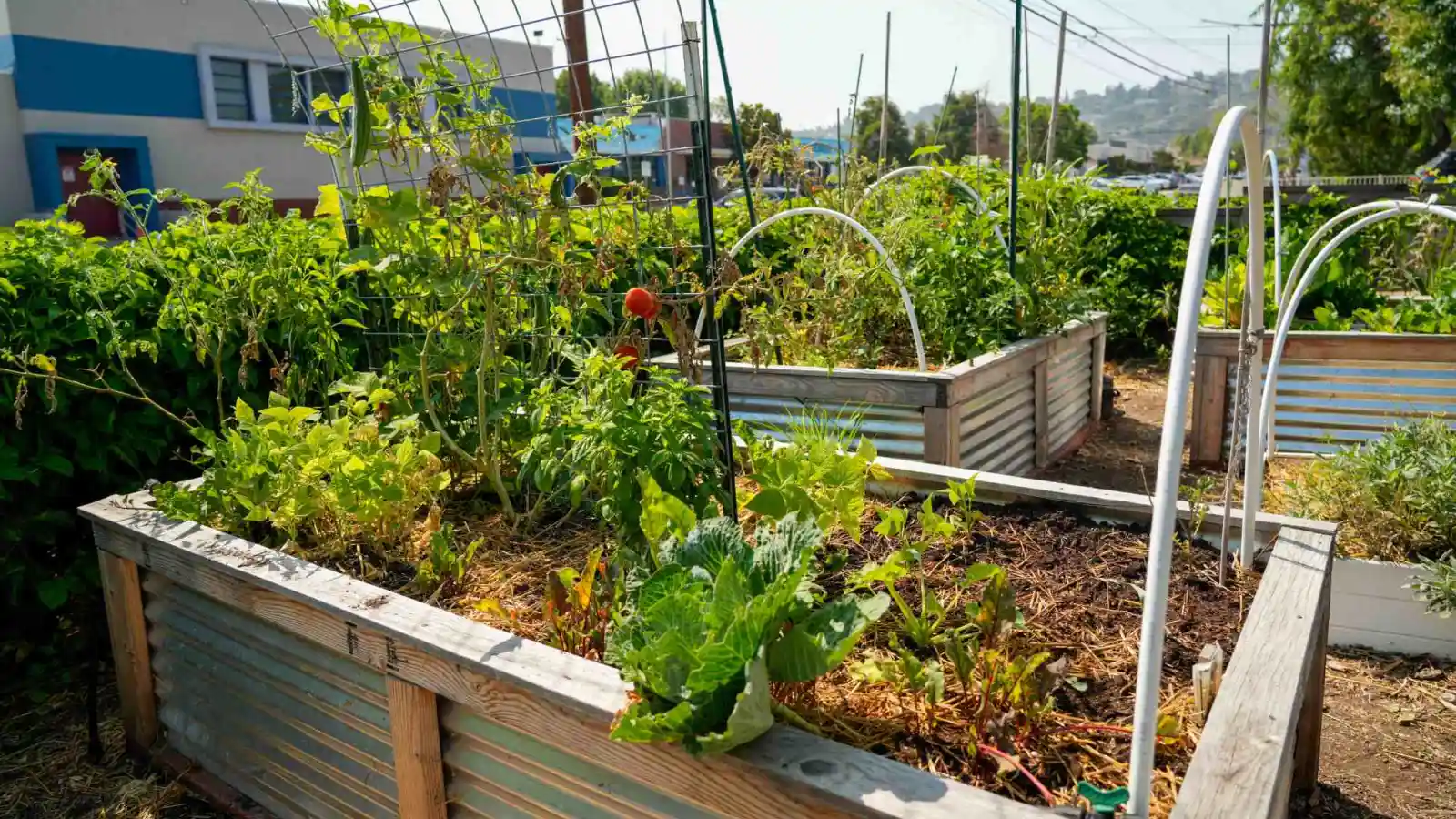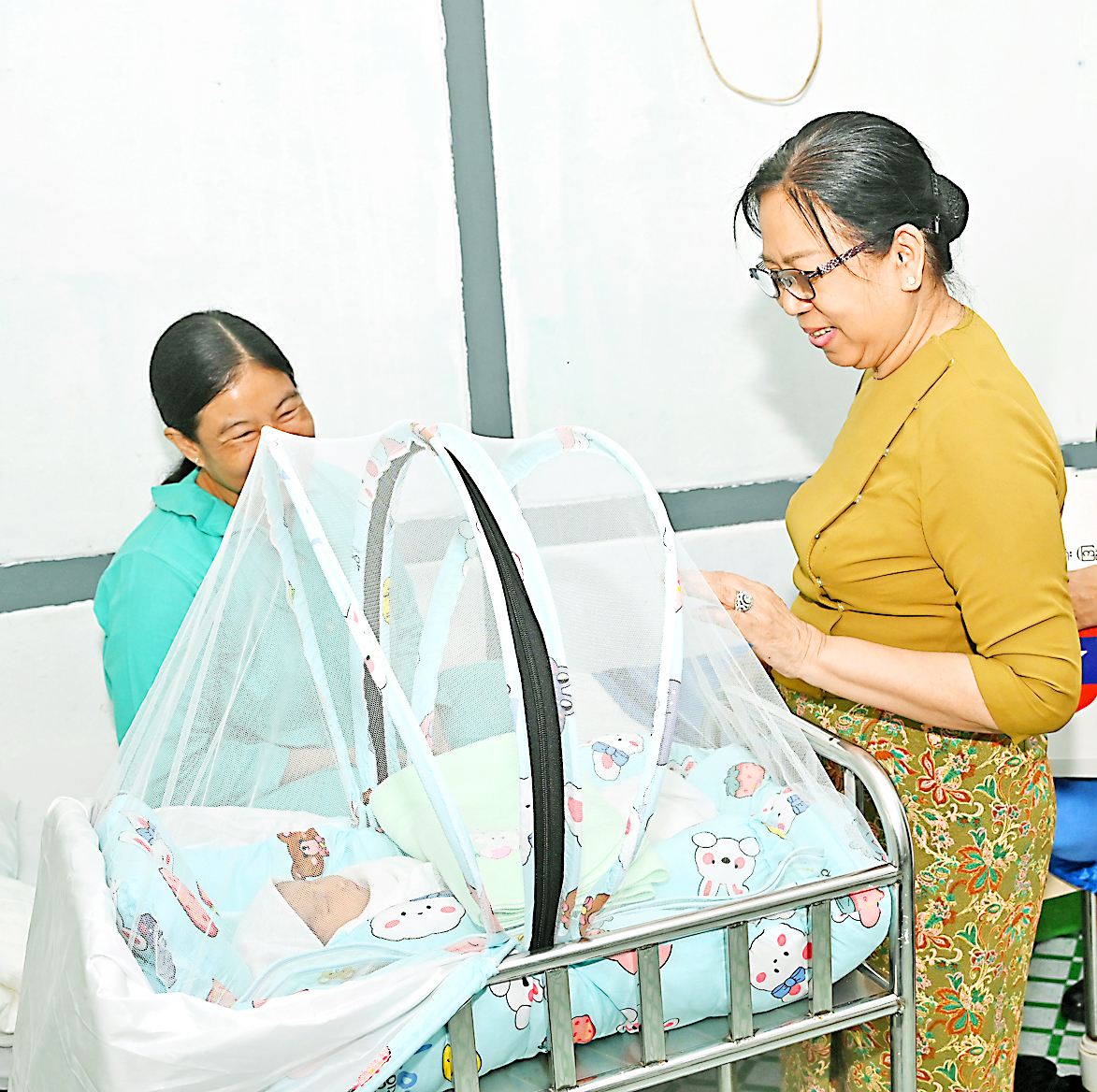By Nicole Sours Larson
Copyright sandiegouniontribune

For The Union-Tribune
Passion fruit tendrils, filled with colorful, multilayered passion flowers, and vines promising juicy black table grapes festoon the fence marking the entrance to the Good Shepherd Ministry Center (GSMC) community garden in El Cajon. Blackberry brambles adorn a facing fence, while milkweed plantings scattered throughout the garden feed monarch butterflies.
These, along with an orchard featuring an array of fruit trees including apricots, nectarines, oranges, lemons, limes, plums, peaches, figs, guavas and jujubes, plus a dragon fruit tower, are all part of the garden’s common area. The fruit trees are all kept trimmed to under six feet for ease of harvesting. The 25 gardeners with assigned plots tend them cooperatively and share in their fruit while also having access to large common beds of strawberries, tomatoes and flowers.
The 6,000-square-foot garden is an intentionally friendly, accessible place. Neighbors frequently stop by with questions for head gardener and garden chaplain Charles I. Lewis, a retired psychiatrist and passionate gardener of over 50 years who came to San Diego with the Navy and, like so many others, remained. The longtime Mount Helix resident is happy to share his knowledge and encourages residents to bring him their gardening queries.
“It’s a teaching garden,” he explained. “It’s not really to provide food for the community but to teach people how to garden and provide people in the community a place to garden.”
Most of the garden participants are apartment dwellers living within a few blocks and are novice gardeners, Lewis said. Many are immigrants or refugees from the Middle East, Afghanistan, Latin America and the Philippines while others are native-born or longtime El Cajon residents eager to grow their own produce. Some had gardened in their native countries or elsewhere in the U.S. but were new to East County’s hot growing conditions. But all lacked access to an appropriate gardening space at their homes.
“Each family, or person, has a 4-by-4-foot section. You can see they grow chard, tomatoes, cucumbers, peppers. They can get a lot in a 4-foot section. And if they want extra growing space, I give them these fabric bags (filled with soil) that can be moved around and they can grow extra food, like eggplant or squash,” Lewis explained.
He pointed out the shoe bag-like fabric hanging organizers with pockets that can be filled with soil and used to grow lettuce and other vegetables.
“They have to be watered every day. Right now, in the hot weather, we’re not using them,” he said.
Some gardeners seek to recreate memories of home. An Afghan refugee, he explained, was eager to plant okra as he did in Afghanistan, while a large Russian immigrant family who volunteered to help Lewis build out the raised beds when the garden first started grows oats and grain as they did in Russia, enough to make a little bread.
The community garden provides everything the gardeners need to grow plants: raised beds, appropriate potting soil mixed with perlite, earthworm castings and composted chicken manure, water, seeds, fertilizer and even tools for cultivation.
The garden opened in 2022, Lewis recounted, and has had little turnover among the gardeners. It was a logical progression in GSMC’s evolution and designed to address food insecurity in the community that grew increasingly apparent during the pandemic.
Lewis responded to a call from Susan Naslund, GSMC’s director, to Foothills United Methodist Church (UMC) in La Mesa for volunteers interested in starting a community garden on the grounds of the former First UMC of El Cajon. The church had closed in 2017 after its congregation dwindled to just a handful of parishioners.
Rather than sell off the property to support other, more thriving congregations as done in the past, the UMC’s governing body appointed a pastor to assess potential uses for the church’s valuable facilities and 1.65 acres of land. She recommended merging the church with Foothills UMC and converting the El Cajon campus into a ministry center to benefit the entire community under Foothills’ umbrella, Naslund explained. Foothills embraced the concept and assumed the ministry center’s stewardship.
“When we began this center, it was still a rather new idea. In our south district, part of the California-Pacific Conference, there are three ministry centers among 70 churches. Foothills is now one church with two campuses,” she added.
The center’s initial focus was its market-style food pantry, which now aids about 300 local families, many from the immigrant and refugee community, along with providing other services, including a clothing closet, diaper bank and hygiene products (see sidebar).
The original plan for the community garden, Naslund explained, was that it could provide fresh fruit and vegetables for their food pantry.
“Then we found that our gardeners are growing just enough for their own families. Any excess doesn’t go far enough. Let’s keep (the garden’s produce) just for the gardeners themselves. We decided, let’s make it a learning garden rather than a production garden,” she said.
An increasingly important part of the garden is the moringa grove, which Lewis and moringa tree advocate Sheryl Huffman — the garden’s moringa ambassador — began planting about two years ago as an additional tool in addressing food insecurity. They now have about 50 trees, with plans to plant more. Their goal is to teach the local community about the moringa (Moringa oleifera), a superfood called the “miracle tree” because of its high nutritional and medicinal benefits, speed and ease of growing and harvesting, plus great drought tolerance. (See sidebar.)
Supported entirely by private funding from Foothills UMC and other sources, including generous grants from the Rancho Santa Fe Garden Club for fencing, the garden has thrived both to help plot holders feed their families and to provide gardening knowledge for the community.
Education remains a strong component of the community garden’s mission. As another tool to make gardening easier and more accessible, Lewis has begun recording short videos on gardening topics for posting on the GSMC’s website.
Beyond his work with the community garden, one day a week Lewis works with third to fifth graders at the adjacent bilingual EJE Academies teaching the next generation about gardening. A group of children from the elementary school helped build and fill the garden’s strawberry beds.
Both the resource center and the garden plan to continue nurturing the community — one conversation and one plant at a time.
Expert garden volunteers are available to answer questions at the garden, located at 772 S. Johnson Ave. in El Cajon from 4 to 6 p.m. on Tuesdays and from 9 to 11:30 a.m. on Saturdays.
To contact Lewis and GSMC’s gardening team, email them at gsmc@foothillsumc.org.
Good Shepherd Ministry Center provides wide-ranging community programs
Like many faith-based community-based programs, Good Shepherd Ministry Center, which opened in 2017, is proudly inclusionary in providing its services.
“We are welcoming to everyone. The banner on our building reads: ‘The GSMC welcomes all regardless of race, gender identity, marital status, physical condition, sexual orientation, ethnic background, or economic situation. Kindness is everything.’ We are not there to promote faith. We are there just to live out our faith,” Naslund explained.
With a small professional lay staff and a backbone of nearly 200 volunteers coming from Foothills United Methodist Church as well from many faiths and ethnicities throughout the community, they now assist about 300 local families every Saturday morning with services including a market-style food pantry with donated food from Feeding San Diego and local grocery stores. They always provide milk, eggs and fresh produce and offer a clothing closet with gently used clothing, diapers, hygiene supplies and even pet food.
In addition, the center’s Hennery, overseen by “Mother Hen” Eli Schneider, raises “very pampered and charming” New Hampshire Red chickens whose uninspected eggs they can’t legally sell, but can offer to church members for a donation. These donations generate enough money to buy commercially produced and inspected eggs to supply the food pantry.
GSMC also runs a composting program, using spoilt produce from the pantry and chicken manure from The Hennery, providing compost for the community garden.
Wednesday nights feature Gentle Yoga classes at the center.
In parallel, GSMC works with local nonprofits and schools to offer extra complementary community programs. Bastyr University Clinic runs a free naturopathic clinic. Art Inspiring Change provides art therapy to help refugee women process trauma through art. The Barrio Logan College Institute assists students to become the first in their families to attend college.
The center provides extra programming space to the neighboring bilingual charter elementary school, EJE Academies, and English as a Second Language classes partnering with the Grossmont-Cuyamaca College District.
Good Shepherd Ministry Center is located at 772 S. Johnson Ave., El Cajon. For more information, visit foothillsumc.org/good-shepherd or email at gsmcmarketplace@foothillsumc.org.
— Nicole Sours Larson
Moringa: the “miracle tree”
Good Shepherd Ministry Center volunteers Sheryl Huffman, GSMC’s moringa ambassador, and Charles Lewis, their garden chaplain, discovered the powerful nutritional “superfood” benefits of the moringa tree (Moringa oleifera) and began planting it in the community garden in July 2023. Huffman, who completed grower’s and educator’s certificates through Vista-based Moringa for Life (moringaforlife.com), is a staunch advocate for planting the tree widely.
According to the National Institutes of Health, “The moringa leaves contain almost all essential nutrients, growth factors, vitamins, amino acids, proteins, minerals, and metals like potassium, iron, and zinc. Besides these, nowadays, plant leaves may be used to prepare various nutritional supplements and medicine.”
Every part of the tree is considered usable: Its seeds are used to purify water, its flowers and leaves are edible and its leaves are especially high in protein, calcium, vitamins and minerals.
A native of India, the moringa is extremely drought tolerant, requiring little or no water once established, grows fast and well in hot conditions, is easy to propagate, grow and harvest and can be grown in the ground or in a container. Best of all, it thrives in the areas of greatest food insecurity and produces food in its first year after planting.
This year, the center held a Moringa Festival to spread the word about the tree throughout the community.
“Our goal is to educate the community and have moringa trees planted in every yard in El Cajon so all can benefit from this nutritious and easy-to-grow tree,” Huffman said.
— Nicole Sours Larson



